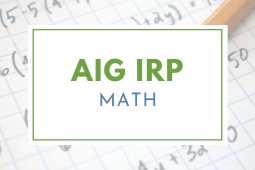- Author:
- Melody Casey
- Subject:
- Mathematics
- Material Type:
- Lesson Plan
- Level:
- Lower Primary
- Grade:
- 2
- Tags:
- License:
- Creative Commons Attribution Non-Commercial
- Language:
- English
Education Standards
The History of Telling Time (AIG IRP)

Overview
Students have the opportunity to explore the history of telling time and some historic clocks. Then they will learn how to tell time using a Roman Numeral clock (students may encounter Roman Numeral clocks in real life). This lesson was developed by NCDPI as part of the Academically and/or Intellectually Gifted Instructional Resources Project. This lesson plan has been vetted at the state level for standards alignment, AIG focus, and content accuracy.
Lesson Overview
Brief Description of Lesson/Task/Activity: Students have the opportunity to explore the history of telling time and some historic clocks. Then they will learn how to tell time using a Roman Numeral clock (students may encounter Roman Numeral clocks in real life).
Time Frame: One class
Type of Differentiation for AIGs:
- Enrichment
- Extension
Adaptations for AIGs:
- Content
Explanation of How Resource is Appropriate for AIGs: Students have the opportunity to see how timepieces developed to give a context for analog clocks. Learning to read Roman numerals is a like breaking a code. This task extends the standard and offers complexity.
Needed Resources/Materials:
- http://www.time-for-time.com/history.htm
- http://www.youtube.com/watch?v=ggvRga_JqXw
- Clock problem sheet
- Clock with Roman Numerals
Sources: http://etc.usf.edu/clipart/galleries/Math/blank_clocks.php
Mathematical Practices:
4. Model with mathematics.
5. Use appropriate tools strategically.
6. Attend to precision.
Stage 1: Engage
We are going to look at a video today about the history of clocks. As you watch the video, think about these questions:
- How does a sundial work?
- Why did people need to keep track of time? Why is telling time important?
- How did clocks at sea actually save lives?
- Why do we tell time using 60 minute intervals?
Also notice the Roman Numerals on some of the old clocks that are shown.
http://www.youtube.com/watch?v=ggvRga_JqXw
Stage 2: Elaborate
Discuss the questions given above. Show students how Roman numerals work at least up through 12. Show a time on a clock that has Roman Numerals and ask students to tell the time. Repeat several times, and ask students to share their strategies for determining the time on the clock. Give students the clock worksheet to practice drawing time on Roman numeral clocks. The website included in the resources has a clock face that you can use to make other sheets or make blank sheets for students to use. Students may wish to follow-up with research after viewing the video.
Stage 3: Evaluate
Student understanding of Roman numerals and of telling time can be assessed on the given worksheet or the teacher may create other time problems using the graphic provided.